Tech Trends Impacting the Furniture Industry: From AI to 3D Product Visualization
White paper
Executive summary
Inspired by the latest developments in the furniture industry, we set out to understand the true state of digital transformation. A commissioned study conducted by Forrester Consulting on behalf of Cylindo surveyed furniture industry leaders to explore the adoption of emerging technologies, the challenges along the way, and the impact on business outcomes.
The furniture industry has long had a reputation for being too slow to embrace innovations and was perceived as rudimentary, underdeveloped, and bland. The good news is that none of these are true.
With the accelerated digital transformation across different industries, customers’ expectations went sky-high. As a result, furniture businesses had to pick up steam and deliver engaging customer experiences. From 3D product visualization and augmented reality (AR) to automated inventory management and artificial intelligence (AI) for customer support, leading companies in the space are setting up new standards, not just for the furniture industry but for business in general.
The influx of tech-driven furniture businesses keeps legacy incumbents on their toes, forcing them to keep a pulse on the latest trends. We are witnessing the digital metamorphosis of age-old furniture companies that are embracing change to stay relevant for the decades to come.
In this white paper, we unveil the current state and level of adoption of the latest technologies, and then we dive deeper into the opportunities 3D product visualization technologies can bring and the industry's future preparedness and outlook for digital transformation.
Key findings
Here are the key findings from a commissioned study conducted by Forrester Consulting on behalf of Cylindo that explores the current and future technology priorities for furniture businesses.
-
Preparing for the future - So many industry observers have questioned the health and vitality of the furniture industry in the last couple of years, but our survey results suggest that businesses are optimistic about the future of their sector. Moreover, they are continuing to invest in it, with the hope of a tangible payoff in the future. Data shows that 100% of survey respondents are planning to make new technology investments in the next 12 months.
-
Solving fundamental challenges with technology - Success in furniture — or almost any line of business in a digital-first world — depends upon technology. One thing is clear from this research: The appetite for emerging technologies is high.
-
Keeping up with the competition - Groundbreaking technologies are revolutionizing the furniture landscape, from how consumers shop to how the furniture industry operates. As furniture businesses continue to be challenged by tech-savvy players in the space, companies without strong digital strategies will fall behind.
-
Putting customer experience at the forefront of business - Customer experience is the cornerstone of success. Aware of this, furniture companies are investing in technologies that transform the customer experience and boost buyer’s confidence. Fifty-nine percent of furniture businesses are expanding the use of 3D product visualization, and 52% are planning to adopt AR in the next 12 months.
-
Winning the experience battle - Technology isn’t the final solution; it’s an enabler. Companies won’t be able to solve their customer experience problems with technology alone — they need to focus on experience to realign priorities. One of the areas that is set to disrupt the furniture shopping experience is product visualization. Almost one-third of respondents (32%) believe that product visualization (encompassing 3D visualization tools, AR, VR, AI, etc.) is poised to become more important and widespread, evolving into an industry standard and a key differentiator in the furniture industry over the next 3-5 years.
Methodology
Cylindo commissioned this study to understand how furniture organizations can adapt to the digital landscape by embracing 3D product visualization to improve customer experience and drive e-commerce sales. The survey explored technology adoption, challenges, and the impact of these strategies on business outcomes. It also evaluated the furniture industry’s future preparedness and outlook in terms of digital transformation.
To achieve these objectives, Forrester conducted an online survey with 190 decision-makers responsible for product visualization at their organization. The survey took place in June 2023.
The survey participants were equally distributed across different countries, including U.S. (17%), U.K. (17%), Canada (17%), Australia (17%), Germany (16%), and Italy (16%). Most of the respondents worked at companies with 1,000-4,999 employees (31%), followed by companies with 500-999 employees (27%) and 100-499 employees (19%).


Forty-two percent of the respondents were furniture sellers, 20% were furniture manufacturers, and 38% were both manufacturing and selling furniture. Most of the survey respondents were manufacturing and selling living room furniture (81%), followed by bedroom furniture (79%), home office furniture (73%), and kitchen furniture (67%).

Looking at the position of the survey respondents, 34% of respondents worked as VPs in charge of one or several large departments, 28% were directors/heads of departments, 28% were managers, and 9% were C-level executives. According to the survey results, 39% of respondents were part of the team that makes decisions about the product visualization strategy, 31% were final decision-makers for the company’s product visualization strategy, and 30% of respondents had an influence on decisions related to the product visualization strategy.
01 Exploring the current state
3D product visualization leads the charge in the furniture industry's digital strategy.
Across the furniture industry, there is a dominant trend toward adopting 3D product visualization, with an impressive 59% of respondents indicating they are expanding its use. Despite the widespread adoption of technologies like automated inventory management (35%) and AI for customer support (19%), it's 3D visualization that's stealing the spotlight.
This suggests an industry eager to harness digital capabilities for enhanced customer experience, with 3D visualization at the forefront of these efforts.
Results show that automated inventory management, AI for customer support, and 3D product visualization are among the top three technologies furniture businesses have already adopted or plan to expand in the next 12 months.
The turmoil of the last few years has had a big impact on consumers’ furniture shopping behavior. The sudden shift to online shopping catalyzed by the pandemic has raised the bar on customer experiences. So, it’s no surprise that furniture businesses are keen on embracing new technologies such as augmented reality and virtual reality. Data shows that augmented reality has the potential to disrupt the furniture industry — 52% of respondents are considering or planning to adopt AR in the next 12 months.
If you are still on the fence about using AI technology and you think it’s a fad — the industry disagrees. Results show that 61% of furniture businesses have already adopted AI for customer support and recommendations. There’s no doubt that the industry is prioritizing initiatives and technologies that have the power to redefine customer experience.
Hand in hand with customer experience initiatives, furniture businesses are investing in technology to improve features and processes. Sixty-one percent of respondents have already adopted Internet of Things (IoT) integration for smart furniture, while 15% are planning to expand its adoption over the next year. Cloud-based collaboration tools for employees are also widely adopted among furniture businesses (61%).
To improve operational efficiency, 38% have already adopted robotic process automation (RPA), and 51% of furniture companies are planning to adopt this technology over the next 12 months.
Sustainability, as one of the hottest topics in the industry, is also on furniture businesses’ radar — 45% of respondents are planning to adopt sustainability-focused technologies (e.g., eco-friendly materials, energy-efficient production processes, etc.) in the next 12 months.
To what extent is your organization currently adopting or planning to adopt new and emerging technologies for digital transformation in the furniture space within the next 12 months?

These sobering statistics point out that the furniture industry is on the cusp of major change — for the better. The rise of new technologies will force furniture brands and retailers to rethink how to transform their businesses.
02 Technologies and business outcomes
New technologies are overhauling strategic thinking, reimagining customer experiences, and fueling business advancement.
The furniture industry is undergoing a technological revolution, which requires traditional furniture businesses to adopt a customer-centric approach and think like technology companies. This entails investing in new technology platforms and adopting a mindset focused on delivering digital experiences that cater to the customers’ needs. Although this may require increased levels of investments, it is essential for survival in the emerging industry structure.
Companies must embrace digital transformation to stay relevant and succeed in the modern era of the furniture industry.
Furniture businesses can improve scalability and adaptability through digital transformation by:
- leveraging 3D product visualization technology,
- automating inventory management,
- implementing agile supply chain management practices,
- personalizing customer experiences,
- automating repetitive tasks,
- improving customer support with AI,
- utilizing data-driven decision-making to optimize operations,
- fostering a culture of continuous innovation.
These strategies enable furniture companies to adjust operations to meet changing demands, optimize inventory management, enhance customer engagement, leverage technology for efficient and scalable operations, and future-proof their furniture business.
How to get started with technology adoption
Venturing into the adoption of new technologies can be daunting, especially if you don’t have the right data to make an informed decision. As a result, many businesses are jumping on a trend just because “everyone is doing it.” Instead of going with the flow, make your decisions based on the expected outcomes from your investment.
Results from the commissioned study conducted by Forrester on behalf of Cylindo show the impact different technologies have on customer experience and business outcomes, according to furniture industry leaders. Let’s dissect the data to understand the impact.
3D product visualization
3D product visualization has been around for quite some time. However, the advancement in product visualization technologies has created many use cases in recent years, making it a crucial component of furniture businesses’ success. Results from the survey are a testament to that. According to 68% of furniture leaders, 3D product visualization is impactful in increasing sales, and 64% see it as crucial for improving the customer experience. Additionally, according to 47% of those leaders, 3D product visualization helps in reducing costs as well.
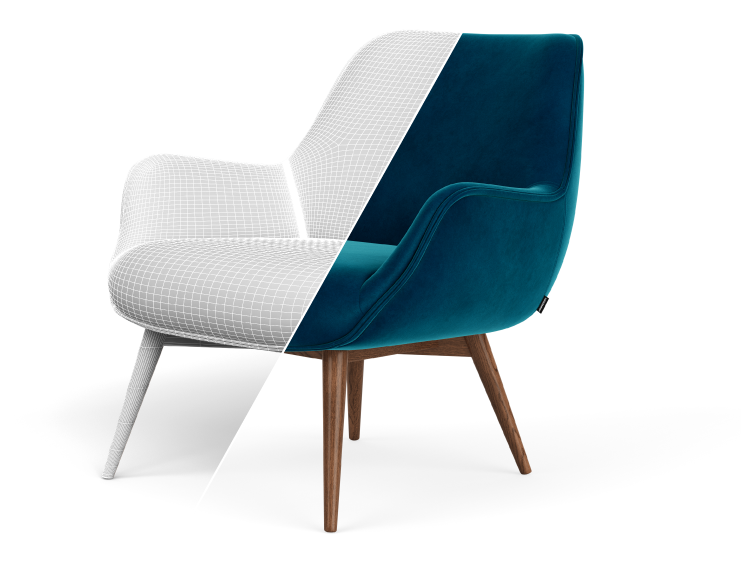
360-degree visualizations
Consumers love interactive shopping experiences. Using 360-degree visuals on your product pages can emulate the “touch-and-feel” experience of shopping in person. Combining rotating imagery with 4K zoom functionality is an even more powerful way to give your website visitors a sense of control, boosting customer confidence. Research data shows that 58% of furniture businesses consider 360-degree visuals as an impactful way to improve customer experience and satisfaction. According to 56% of furniture leaders, 360-degree visuals have a positive impact on sales.
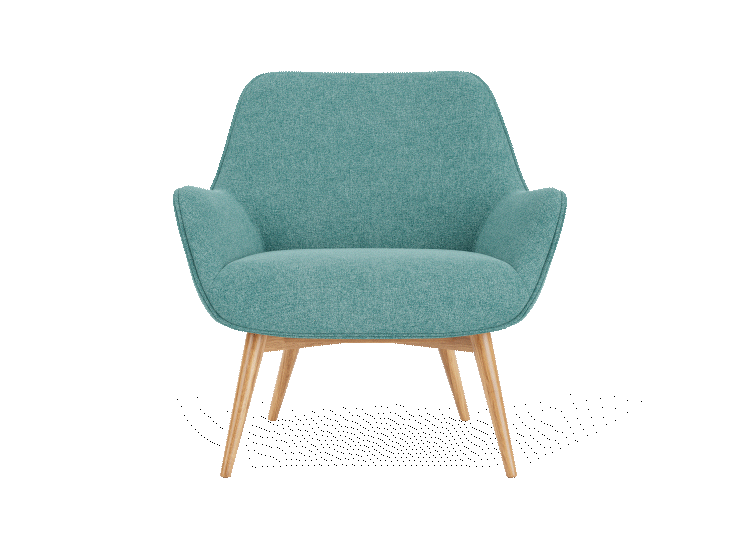
Augmented reality (AR)
In an effort to create more immersive customer experiences, furniture businesses have tapped into augmented reality. Furniture is an ideal category for augmented reality as it enables consumers to virtually “try out” products by inserting virtual objects, such as sofas, tables, and chairs, into their homes. This takes the guesswork out of the purchasing process and puts customers in control. On top of that, it helps furniture companies boost the bottom line. According to 63% of furniture leaders, augmented reality can impact sales, and 46% consider this technology to improve the customer experience.
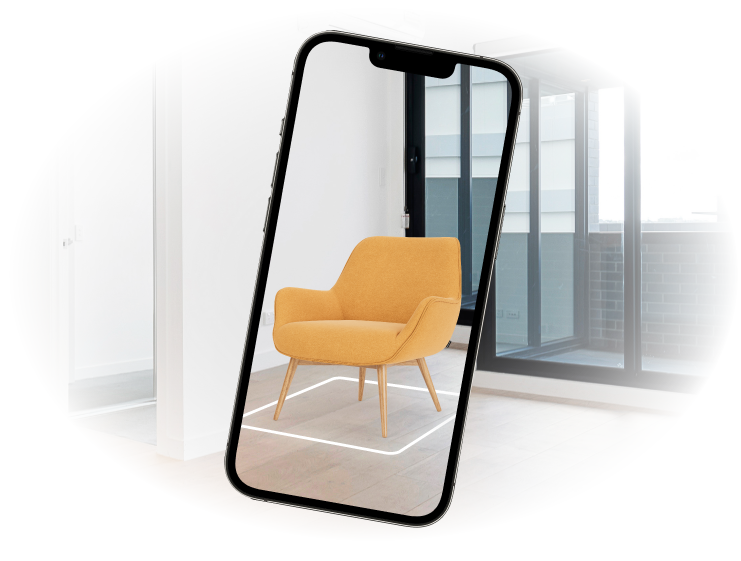
Virtual reality (VR) showrooms
Virtual reality offers a completely immersive experience because it blocks out the real world, as it requires wearing a special headset. One of the biggest challenges for virtual reality is the innovation-implementation gap. On one hand, there is not enough headset adoption to produce VR experiences; on the other hand, there are not enough VR experiences worth buying a headset. However, heavy investments in VR from some of the biggest tech giants are a sign that we can expect technological advancements soon. Similar to augmented reality, furniture businesses perceive virtual reality as impactful in increasing sales (65%) and cost reduction (42%).

AI for customer support
As we navigate the AI-fueled frenzy, one can't help but wonder: Is AI truly a game changer, or are we just distracted by all the buzz around it? While we are just scratching the surface of the potential AI holds, it seems that even now, some of the AI use cases have proven to be instrumental for businesses. Data shows that 78% of furniture leaders see AI for customer support as impactful on sales, 45% think it improves customer satisfaction, and 38% consider that it helps them reduce costs.

Image-based search
The modern customer journey has evolved in the past couple of years. Nowadays, customers use their laptops and mobile devices to search for information, whether they're on the move or lounging on the couch with a second screen. As a result, new ways of search have become increasingly popular, especially visual and voice search. Visual search enables shoppers to upload an image to a website and locate visually similar products. This technology is extremely useful for people who don’t know how to describe what they’re looking for, but they have a visual of a similar product. Besides being helpful for product discovery, 73% of furniture businesses think visual search has a high impact on sales.
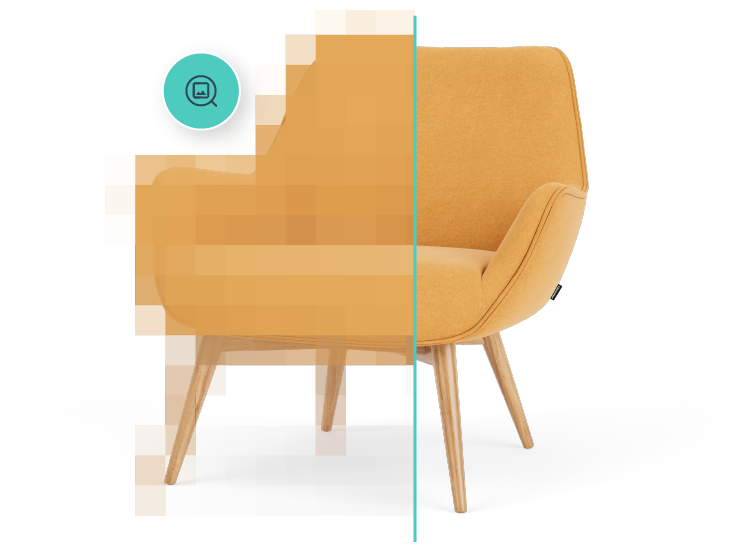
Personalized recommendations based on customers’ preferences and browsing history
Product recommendations have been around for more than two decades. Today, thanks to advances in technology, we are witnessing the rise of personalized, predictive product recommendations. Using AI technology, companies can give product recommendations based on who the user is and in what context they are viewing your site. Showing users personalized product recommendations has, by this point, become a web convention in furniture e-commerce. So it’s no surprise that according to furniture businesses, product recommendations have a significant impact on sales (66%) and operational efficiency (41%).
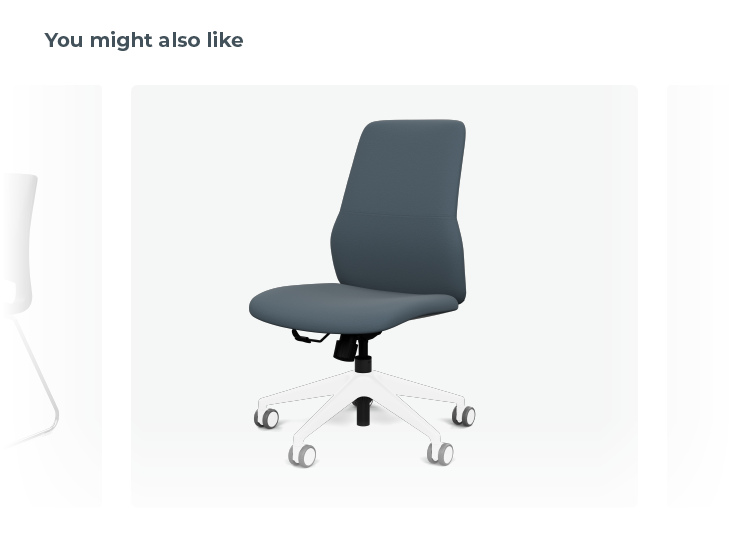
IoT integration for smart furniture
The global smart furniture market experienced substantial growth due to increased consumer interest in home automation and IoT technologies. Smart furniture now has IoT sensors, voice-activated controls, and wireless charging, enhancing its functionality and making it more comfortable and user-friendly. Expanding their portfolio with smart furniture has proven to be beneficial for furniture companies. Data shows that furniture leaders view IoT integration for smart furniture as impactful in sales increases (74%) and customer experience (54%).
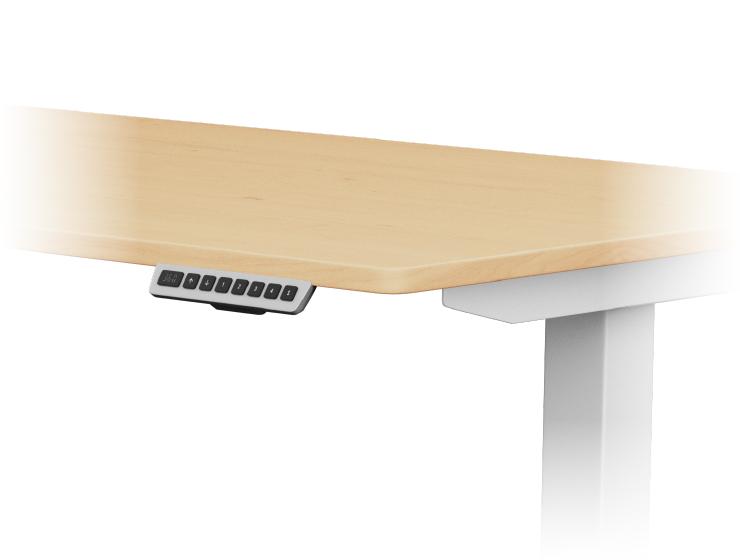
Automated inventory management and logistics
An automated inventory management system allows businesses to manage their inventory in real time. This technology can perform several important business operations, such as automating replenishment and purchase orders, delivering customer orders automatically, assigning fulfillment operations, tracking inventory across multiple warehouses, syncing order and inventory data from all sales channels, and managing inventory across various channels. When asked about the impact of automated inventory management and logistics, 68% of furniture businesses consider it helpful for improving operational efficiency.
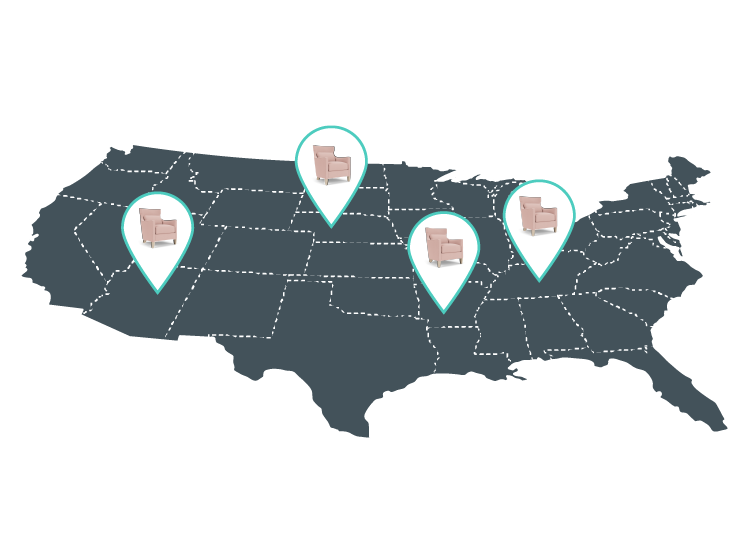
03 A look into the (not-too-distant) future
Furniture businesses will use new tech to meet customer demands and stay competitive.
In order to stay competitive and meet the demands of modern consumers, furniture businesses are actively prioritizing the integration of innovative technologies into their operations.
These technologies range from advanced processes for more efficient production to software solutions that enhance product visualization, improve customer experience, and streamline supply chain management. By embracing these advancements, furniture companies are better able to offer high-quality products and services while remaining agile and adaptable in a rapidly evolving market.
100% of survey respondents are planning to make new technology investments in the next 12 months
According to Forrester’s findings, over the next 12 months, all respondents are planning to make new technology investments, indicating a widespread trend toward embracing technology in the industry. For the majority of companies (68%), moderate investments in new technology are planned, amounting to 10%-25% of their budget. Meanwhile, a notable 17% of companies are preparing for significant investments, allocating more than 25% of their budget.

04 The role of 3D product visualization
Furniture businesses put 3D product visualization at the core of their strategy and use it across multiple touchpoints.
Customers’ shopping behavior has evolved over the years, leaving businesses with no choice but to adapt to the modern furniture purchasing journey that starts online. This forced businesses to invest in high-quality product visualization to close the online-offline gap.

The nature of the furniture industry makes product visualization a crucial part of the overall business strategy. Data from Forrester shows that 93% of furniture leaders rated 3D product visualization as very to extremely important for their current business strategy. This underlines the crucial role that this technology plays in modern business, demonstrating its influence and potential impact on future industry trends. Only a minimal 8% regarded it as moderately important, further emphasizing the overwhelming inclination toward 3D visualization in strategic planning.
93% of furniture leaders see 3D visualization as crucial for their business strategy
Here’s the thing: Without a solid 3D product visualization strategy in place, furniture businesses can’t position themselves as leaders in the furniture space. One of the things that distinguishes leading furniture businesses is their approach to 3D product visualization. Making it the pillar of your business sets the foundation for future growth and future-proofs your business in this digital-first era.
The proliferation of social media and other online channels has changed the way people shop for furniture. The buyer’s journey is no longer linear — it’s dynamic. The number of customer touchpoints is vast and constantly growing. This puts additional pressure on businesses to get the most out of each channel while providing the seamless experience customers have come to expect.
The buyer’s journey is no longer linear — it’s dynamic
While it’s clear that 3D product visualization is instrumental in creating a delightful customer experience, the question is: How are furniture businesses using 3D product visualization to achieve their goals? To understand the role of 3D product visualization in furniture businesses’ success, we’ve explored the most common uses of this technology across different touchpoints.
Results show that 3D lifestyle imagery leads the pack in the use of 3D product visualization — 66% of furniture leaders said they are using the power of 3D to create photorealistic lifestyle imagery. This is followed closely by content on product detail pages online (57%), digital marketing campaigns (56%), and AR virtual product experiences in-store (53%). These findings highlight the growing relevance of immersive and realistic 3D visuals in modern customer experiences.
Almost half of respondents are using 3D product visualization for AR “try before you buy” experiences. Among other popular use cases, we can see dynamic product imagery, such as video, 360-degree views, and zoom (45%), as well as digital assets used for in-store customer experience (42%), social media content (36%), and dimension product imagery (34%).
66% of furniture businesses use 3D visualization to create 3D lifestyle imagery
Some of the underrated use cases of 3D product visualization include digital assets created and shared with intermediary partners (e.g., retail partners, marketplaces, etc.), digital assets used for B2B sales and marketing (e.g., specification sheets, catalogs, etc.), and digital assets used for trade shows — which points to the underutilization of 3D product visualization among furniture manufacturers.
The best part about 3D product visualization is that it doesn’t need to be “either-or.” Once you invest in high-quality 3D product visualization, you can maximize return on investment (ROI) by using high-quality visuals across touchpoints.
05 Next up: setting expectations
The importance of 3D product visualization in achieving business priorities
Strategic investments go hand in hand with high expectations. 3D product visualization is no exception. Furniture businesses that invest in 3D technology have a list of priorities they expect to achieve over the next 12 months. The survey results indicate a substantial recognition of the importance of 3D visualization tools in achieving key business priorities.
Revenue growth tops the list, with 70% of respondents marking it a critical priority. This is followed by increasing influence and brand reach in the market, flagged as a critical priority by 58%. Respondents also highlight the acceleration of their response to business and market changes (52%) and the shift to digital business (45%) as critical areas where 3D visualization tools play a significant role.
70% of furniture businesses identify revenue growth as a critical priority enabled by 3D visualization
If we look at the business priorities marked as “critical priority” and “high priority” combined, we can see that according to furniture companies, 3D product visualization is critical for reducing returns by providing a more accurate representation of the products (91%), improving products and services (91%), accelerating response to business and market changes (89%), and increasing influencer and brand reach in the market (89%).

06 Benefits and impact of 3D product visualization
The perceived value 3D product visualization holds for furniture businesses
According to the respondents, adopting 3D product visualization comes with an array of benefits that primarily boost the customer experience and sales. An impressive 66% identify improved customer experience (online or in-store) as a top benefit. Closely following this, 62% of respondents believe that 3D visualization leads to increased sales (online or in-store).
3D product visualization fuels improved customer experience and boosts sales
Other prominent benefits include improving the quality of product imagery and digital content (56%), enhancing adaptability to market conditions (53%), and increasing customer engagement (52%).
In your opinion, what are the benefits of adopting 3D product visualization?

The adoption of 3D product visualization has proven to be significantly impactful in various business areas. It has notably led to a surge in the average order value both online (61%) and in-store (69%). Online customer engagement has also seen a considerable boost, with 58% of businesses reporting increased digital customer engagement (e.g., page views). Data shows that 3D product visualization has allowed 39% of businesses to reduce product visualization costs.
What business impact have you seen since adopting 3D product

07 Challenges and obstacles
The roadblocks to adopting and effectively utilizing 3D product visualization tools
As businesses navigate the implementation of 3D product visualization, the lack of budget emerges as the most significant hurdle (43%). Uncertainty about the ROI is also a notable roadblock, with 29% viewing it as very challenging. Other significant investment constraints include finding the right visualization tool or platform (27%) and resistance to investing in new solutions (17%).
43% of furniture businesses consider lack of budget as the main challenge in effectively implementing 3D product visualization
Another pressing concern is the lack of necessary skills and resources for managing, creating, distributing, and keeping 3D product imagery and visualization up to date, a sentiment shared by more than a third of businesses.
To fully account for the impact of 3D visualization tools and further improve customer experiences, organizations need to be able to track and analyze consumer interactions with the technology. It is here that organizations find themselves on uncertain ground, facing challenges with tracking and analyzing how customers interact with 3D tools (37%) and measuring the impact on overall sales (33%).
Despite these challenges, companies persist in their journey to adopt 3D product visualization, given its substantial benefits.
What are the main challenges your company faces in effectively implementing 3D product visualization?

When asked about the most significant obstacles in adopting and effectively utilizing 3D product visualization tools, a lack of understanding and awareness tops the list with 33%. Close behind are the challenges related to high costs associated with acquiring and maintaining 3D tools and training staff in the effective use of 3D visualization tools, both acknowledged by 27% of the survey participants. Additionally, 25% of businesses report the difficulty of finding the right 3D visualization solution for their specific needs and implementing the tools as significant barriers.
Which of the following obstacles do you perceive as the most significant in adopting and effectively utilizing 3D product visualization tools within your organization?

08 AI is gaining traction
AI tools are gaining ground in product and lifestyle imagery creation.
Businesses are hyped about the potential of artificial intelligence, and the furniture industry is certainly not immune to this trend. Furniture companies are in a mad dash to figure out AI and identify use cases that can affect their ability to meet future objectives. One of the areas where furniture businesses are already knee-deep in exploring the power of AI is product visualization.
AI tools are becoming an integral part of product and lifestyle imagery creation, with 56% of furniture organizations employing them to automatically generate or modify images. They are also used in image recognition, classification, and tagging by 52% of organizations. Forty-two percent of furniture companies use AI for real-time customization and adaptation of imagery.
56% of furniture businesses use AI tools to automatically generate or modify images
AI is employed to create personalized imagery based on customer data by 40% of respondents, while smart cropping and framing of images are AI-driven in 37% of the cases. Furthermore, 35% are leveraging AI for testing and optimizing imagery for better engagement, and 34% are automating the image creation and editing process with AI. A meager 4% of organizations are yet to utilize AI tools, highlighting the vast acceptance and application of AI in the industry.
In what ways is your organization utilizing AI-based tools for product and lifestyle imagery creation?

09 Future outlook
Product visualization is set to become an industry standard in the furniture sector
The furniture industry is going through rapid change. Customer expectations today are the outcome of movements that have been underway for decades. Changes such as the explosion of digital, the empowered customer, and the acceleration of innovation are having a profound impact on customer expectations.
This poses the question: What are the technologies that will revolutionize the customer experience? One area that holds particular promise is product visualization. According to Forrester's survey of furniture industry leaders, there is a positive outlook toward a more technologically advanced industry landscape.
Almost one-third of respondents (32%) believe that product visualization (encompassing 3D visualization tools, AR, VR, AI, etc.) is set to become more important and widespread, evolving into an industry standard and a key differentiator in the furniture industry over the next 3-5 years. Meanwhile, 23% of the participants anticipate these tools will evolve in conjunction with advancements in AR/VR/AI, leading to more immersive and interactive experiences. Additionally, 21% of respondents consider that the role of product visualization will increase in certain segments or applications.

